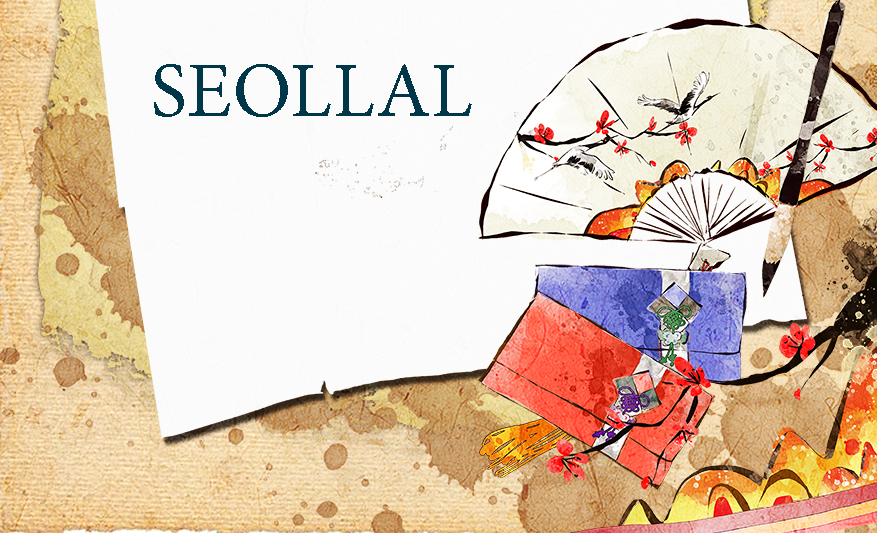Ringing in the New Year… Again!
Korea’s Lunar Legacy.
By David Shaffer.
When I was young and growing up in North America, New Year’s was a special event. My parents and their best friends, who lived up the road, would get together on December 31 at either our place or theirs to spend New Year’s Eve. They would sit around the kitchen table to talk, joke, and gossip over warming cups of coffee and homemade cookies and cake. The evening would often involve the making of the annual eggnog, the traditional holiday drink, but the normally teetotaling parents also were known to occasionally, and clandestinely, spike their eggnog to make it a bit alcoholic. As the evening grew closer to midnight, everyone would gravitate to the television in the living room to watch the festivities in New York City’s Time Square, culminating in the big silver ball descending at the stroke of midnight.
When I came to Korea, I encountered a very different New Year’s: different foods, different customs, even different dates! If you did not get all the celebrating in that you had planned on in January, do not feel disheartened; Korea features a second New Year’s festivity three to seven weeks later every year! When I came to Korea, the first of these two holidays was called Sinjeong (신정, new New Year’s) and the later one, Gujeong (구정, old New Year’s). The more recent of the two holidays, Sinjeong, was created by the newly born Republic of Korea government after the colonial period. This was to show the world that it was not a backward country but instead was following the ways of the West, including celebrating the New Year according to the Gregorian calendar, on January 1.
Sinjeong is a one-day official holiday, while Gujeong, more commonly known as “Seollal” (설날) these days, is officially a three-day holiday. In recent decades, the existence of two New Year’s holidays has at times been hotly debated both by the general public and the government: Why should we have two New Year’s holidays; is that not illogical? If we keep them both, which should be the main one? In the process of this wrangling, the name of the lunar New Year has shifted: Seollal, or Seol (설), and Minsogui-nal (민속의 날, Folklore Day) during the latter 1980s when proponents of a single New Year’s day were strong.
The Year of the Ox
This year, according to lunar calendar tradition, is Sinchuk-nyeon (신축년, shin-ox-year), which traditionally begins on the first day of the first lunar month – February 12 this year. And also according to tradition, this year is 4354 of the Dangun calendar, named after the legendary founder of Korea’s Gojoseon kingdom in 2333 B.C.
The name Sinchuk is one of the 60 names in the sexagenary cycle used in naming Korean years, which means that a year’s name repeats itself every 60 years. Each year’s name is composed of two parts: one of the 10 heavenly stems (cheongan, 천간), and one of the 12 earthly branches (jiji, 지지). Shin (辛) is the eighth of the 10 heavenly stems, combining with Chuk (丑, ox), the second of the 12 earthly branches. The 10 stems (let’s call them A–J) and the 12 branches (which we will number 1–12) combine linearly to create the 60 names of the years. For example, A1, B2, C3 … J10, A11, B12, C1 … J8, A9, B10 … and so on, until the cycle of 60 combinations is complete and begins to repeat itself. This year is also called the Year of the White Ox. Each year is associated with one of five colors (white, black, green-blue, red, yellow). The White Ox is said to bring good fortune (and after this past year, we sure could use it!).
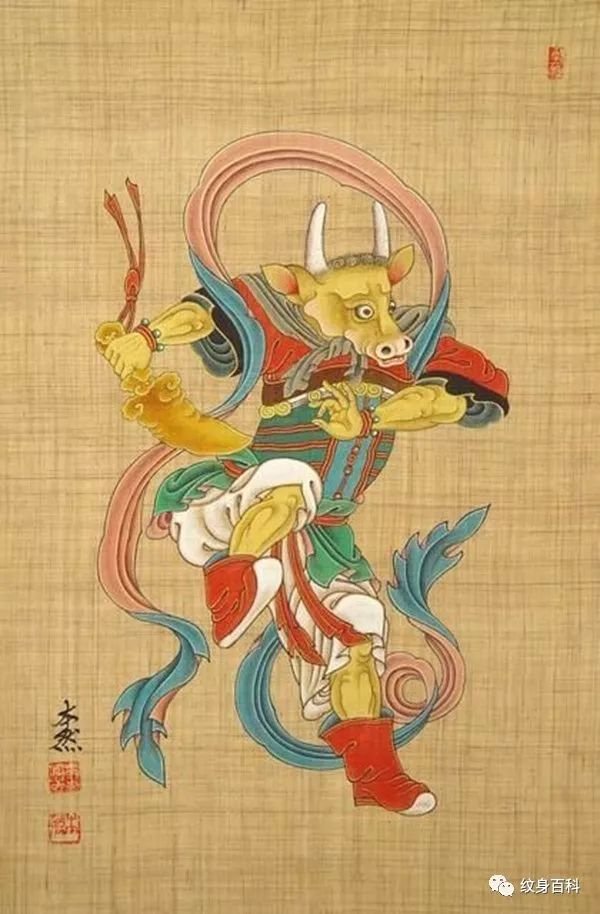
Ancestral Rites
Tradition grows deep roots, and Korea’s centuries-old lunar New Year’s holiday has most certainly survived and thrived, though how it is observed has in some aspects changed over the years. Performing ancestral rites is still a very important part of Seollal. Very early in the morning, the finishing touches are put on preparing foods for setting the table of offerings to the family ancestors – foods that family members may have spent most of the previous day preparing. This ritual, charye (차례), usually takes place in the home of the family head, who is the first son in the family line. The number of generations represented at the ritual table, often the five or seven most recently departed, depends on the customs of the clan that the family belongs to. Over the years with the spread of Christianity, this observance has moved from its original “ancestral worship” to paying respects to those who have passed on.
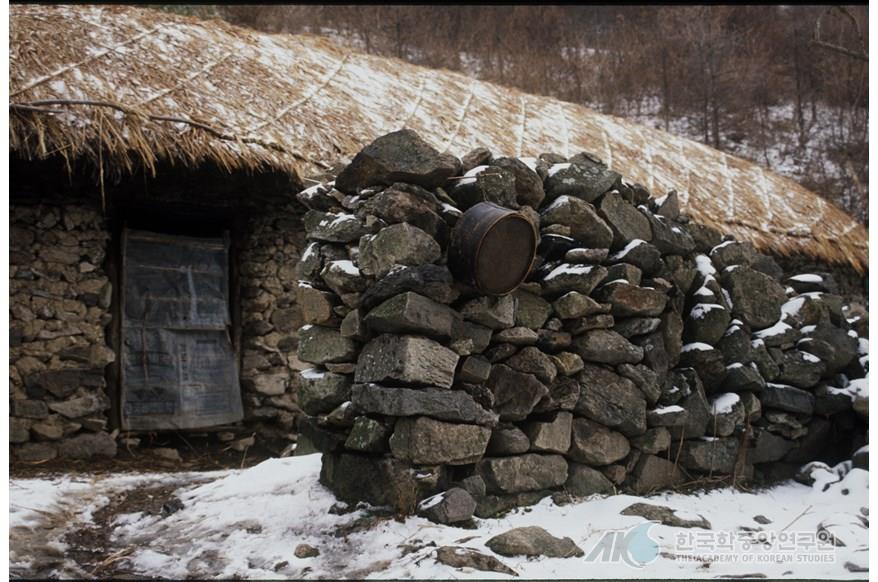
After the charye rites are completed and the extended family that has gathered at the home of the family head has eaten their breakfast, a mid-morning trek is made to the gravesites of one or more of the most recently departed family heads. Foods like those prepared for charye are packed for the trip into the hills, where the graves are often located. The gravesites may be quite a distance away, as they were often located on a hillside (determined by geomancy) in the vicinity of the family head’s home in the countryside. At the grave, foods are set out on a mat (rice, soup, rice cakes, meats, fish, and fruits, as well as a cup of alcohol) and ceremonial bows are made in the rite called seongmyo. Afterwards, the family members in attendance may have lunch with the ceremonial foods before their return.
Seollal Customs
Back in the family head’s home, children are awakening and getting washed and dressed for the day. They may be putting on their finest outfits or possibly their ceremonial hanbok (한복) in preparation for their requisite greeting to their grandparents and elders. This formal bow, sebae (세배, full bow with hands, head, and knees to the floor), was not difficult to get the children to perform because they knew that it included receiving a gift from those they bowed to, usually a gift of money, called sebae-ton (세배돈).
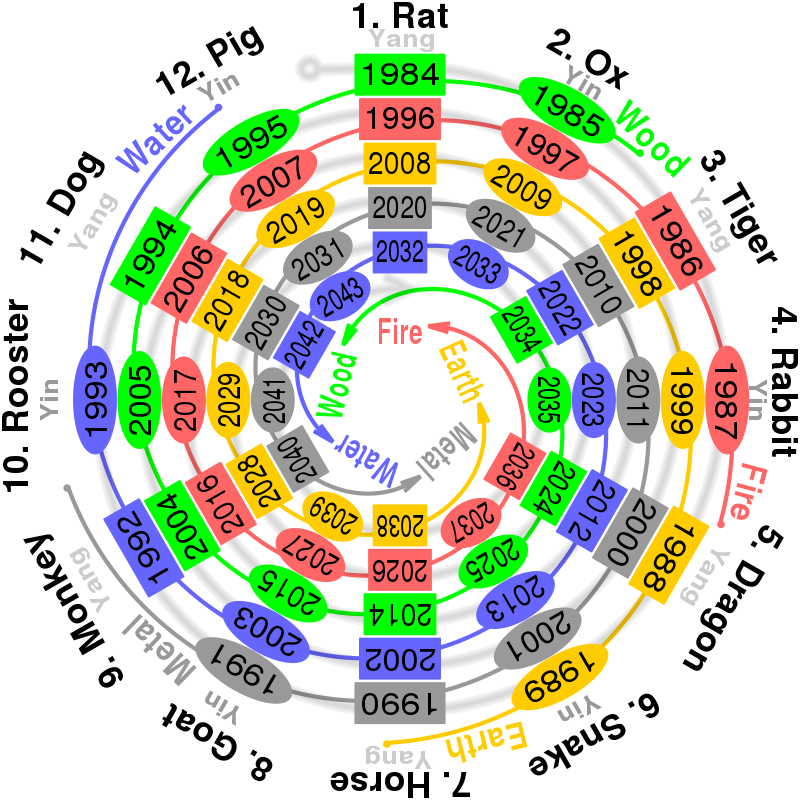
It is soon time for the children, and those staffing the kitchen, to have breakfast. On the menu is the traditional Seollal dish, tteok-guk (떡국, rice cake soup). The children were eager to finish the tteok-guk breakfast because they were told that they would become one year older if they did. Those most eager to up their age might have a second, or third, bowl of soup in the belief that one becomes a year older for each bowl of Seollal tteok-guk that they dutifully devour. In the Korean age-counting system, everyone becomes a year older on the first day of the new year. This “new year” used to begin with Seollal, but as the importance of the Gregorian calendar has increased, becoming a year older on January 1 has now become the norm for most. So if you were born in, say, the year 2000, you would be 22 years old for all of 2021 (2000 is counted as year 1, 2001 as year 2, etc.). Though one celebrates their birthday, whenever that may be, they do not become a year older on that day.

On the wall of the kitchen, or another room of the house, it was not uncommon to see a pair of unused, freshly woven ladles made of rice straw. It was believed that if you bought a set of New Year’s ladles, known as bok-jori (복조리, “happiness ladles”), they would bring good fortune to the household in the coming year. Bok-jori sellers once carried their wares from house to house on the eve of the new year, but more recently, one would have to go to the traditional market or another store to purchase bok-jori. It used to be a tradition in my family to add a new pair of “lucky ladles” each year to the collection hanging on the walls of the different rooms of the house. Sadly, this tradition discontinued as bok-jori have become more difficult to acquire.
Fun and Games
Lunar New Year’s Day, and the days surrounding it, has long been a time of solemn rituals but also of gaiety. The traditional Seollal entertainment most well-known today is the game of yut (윳), a board game played on a 30-centimeter rubbery mat with four sticks that serve as “dice.” The players are children with the adults coaching and cheering them on in the living room of the apartment. When I was younger and going to the countryside for Seollal, the game had a somewhat different appearance. The yut playing “board” was rolled out on the open area in front of the house – a large rice-straw mat more than a meter square with a large “X” inside a square drawn on it. The yut sticks were short, stubby wooden pieces, and the game was not for boys – the menfolk were playing and wagers were being made.
Yut was not the only game men would engage in. Inside the house, the hwatu (화투) cards would come out and the bets would be on. Hwatu, however, is not Seollal-specific; it can be played anytime three or more men get together and have a floor to sit on. The most popular hwatu game these days is probably go-stop (고스톱), though nationwide, min-hwatu was once the game of preference – except in the Jeolla area, where sambong (삼봉) was the signature game played with hwatu cards.
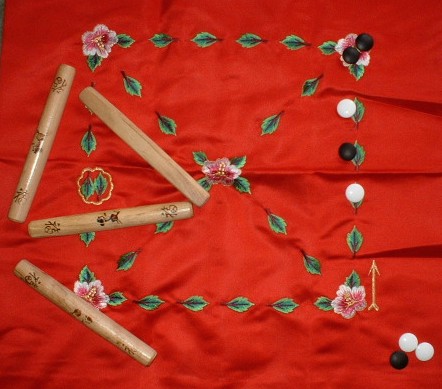
Fun and games are for the children, too. At this time of year, it is easy to find kite-making kits at stores. These fragile fliers are often assembled and destroyed by the wind in a single day. Kite-making and kite-flying (yeon-nalligi, 연날리기) were once a more major undertaking. The kites were larger and sturdier, with intricate shapes and vivid designs on them. At the beginning of the new year, on a paper attached to the kite or written on the kite itself was the Chinese character for “misfortune” (厄, 액, aek). The kite was flown high into the sky, and the kite string was then cut for the kite to fly off and out of sight, taking with it all of one’s possible misfortune for the entire year ahead.
Jegi-chagi (제기차지), a game similar to hacky sack, has often been played over Seollal. The jegi (제기) is often a store-bought plastic weight with streamers extending from it – a colorful transformation of the homemade, cloth beanbag that was once the typical jegi that children would skillfully kick into the air for as many times as possible.
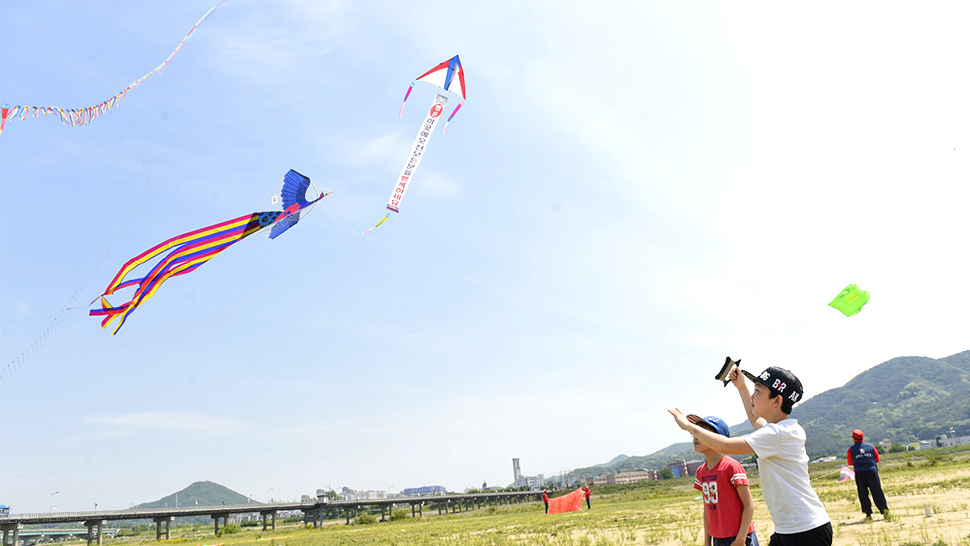
Just as popular as jegi-chagi was pengi-chigi (팽이치기, top spinning). The top was a stubby cylinder of wood, coming to a point at the bottom. The “spinner” was a handheld stick with a cord attached to one end to do the spinning when the top was properly struck. Much like jegi-chagi, pengi-chigi has given way to the much more sedentary games children now amuse themselves with on their computers.
On New Year’s night, special caution was required to guard one’s shoes, especially for the children. It was said that on this night, the night spirit Yagwangi would come to take the shoes that it liked. To prevent this, a large sieve was hung on an outside wall near the shoes because Yagwangi would be tempted to count the holes in the sieve. However, the sieve would have too many holes for Yagwangi to count before the rising sun would chase the night spirit away.
A Fortnight of Festivities
The lunar new year was traditionally not a one-day affair, nor the three-day holiday that it is today. Festivities spanned the 15-day period from the new moon of the new year to the full moon of the first lunar month: Daeboreum (대보름; February 26 this year). During this time, farmwork was put on hold throughout the entire village for the village folk to prepare and conduct numerous rites and village-wide games.
Individual families would hold household rites (antaek, 안댁) to appease the guardian spirit of the home and ward off disease, calamity, and misfortune for the coming year. Similarly, the village would hold a rite (dangsan-je, 당산제) at the village tree to the village guardian spirit, which included farmers’ band music, dance, and offerings of food and drink.
A major undertaking in many villages was the weaving of a huge rope for the village’s tug-of-war (jul-darigi, 줄다리기) in which the whole village was represented; the winning team was assured a good harvest in the coming year. Go-ssaum (고싸움) was a between-village competition involving two huge ropes used as battering rams to knock the opposing team’s commander off his rope perch, resulting in the certainty of a good harvest for the winning village in the coming year. Until recently, this was still held in Daechon-dong of Gwangju’s Nam-gu.
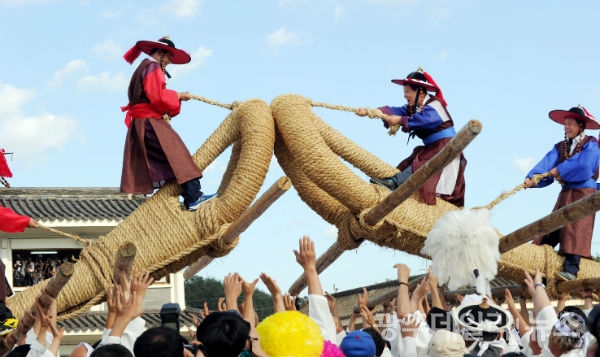
Though Daeboreum day was in the middle of winter, everyone was thinking ahead for good fortune in the year just beginning. This included keeping cool in the summer by “selling one’s heat” (deowi-palgi, 더위팔기). Children would wake up early to call out the names of others as if to get their attention. If the person replied, they had “bought” the caller’s heat. Be aware, this still may occur today, as older people remember of it being practiced in their younger years.
And then, finally, in the darkness of Daeboreum evening, folks would climb to an elevated area where they could get a good view of the Daeboreum moon, one of the two biggest and brightest full moons of the year. As the bright moon rose, solemn supplications were made to the orange orb for good health, good fortune, and other personal wishes for the year ahead. This year, I have prepared my own ahead of time.
새해 복 많이 받으세요 (Wishing you many New Year’s blessings).
Photo Credits
• The sexagenary cycle for years: By Cmglee, CC BY-SA 4.0, https://commons.wikimedia.org/w/index.php?curid=86283295
• Sexagenary chart of year names: motioneffect.tistory.com
• Earthly-God Ox: Munsin-baekgwa
• Yut board and sticks: Kokiri, https://creativecommons.org/licenses/ by-sa/3.0/
• Go-ssaum: Gwangju Daily News, http://www.gjdaily.net
• Kite flying: Preservation Association of Korean Traditional Kite
• Sieve on wall: The Academy of Korean Studies
The Author
David Shaffer is spending his fiftieth Seollal in Korea this February. He is the author of Seasonal Customs of Korea (Hollym, 2007) and has authored a years-long column on Traditional Korea in The Korea Herald. Dr. Shaffer is also editor-in-chief of the Gwangju News.



